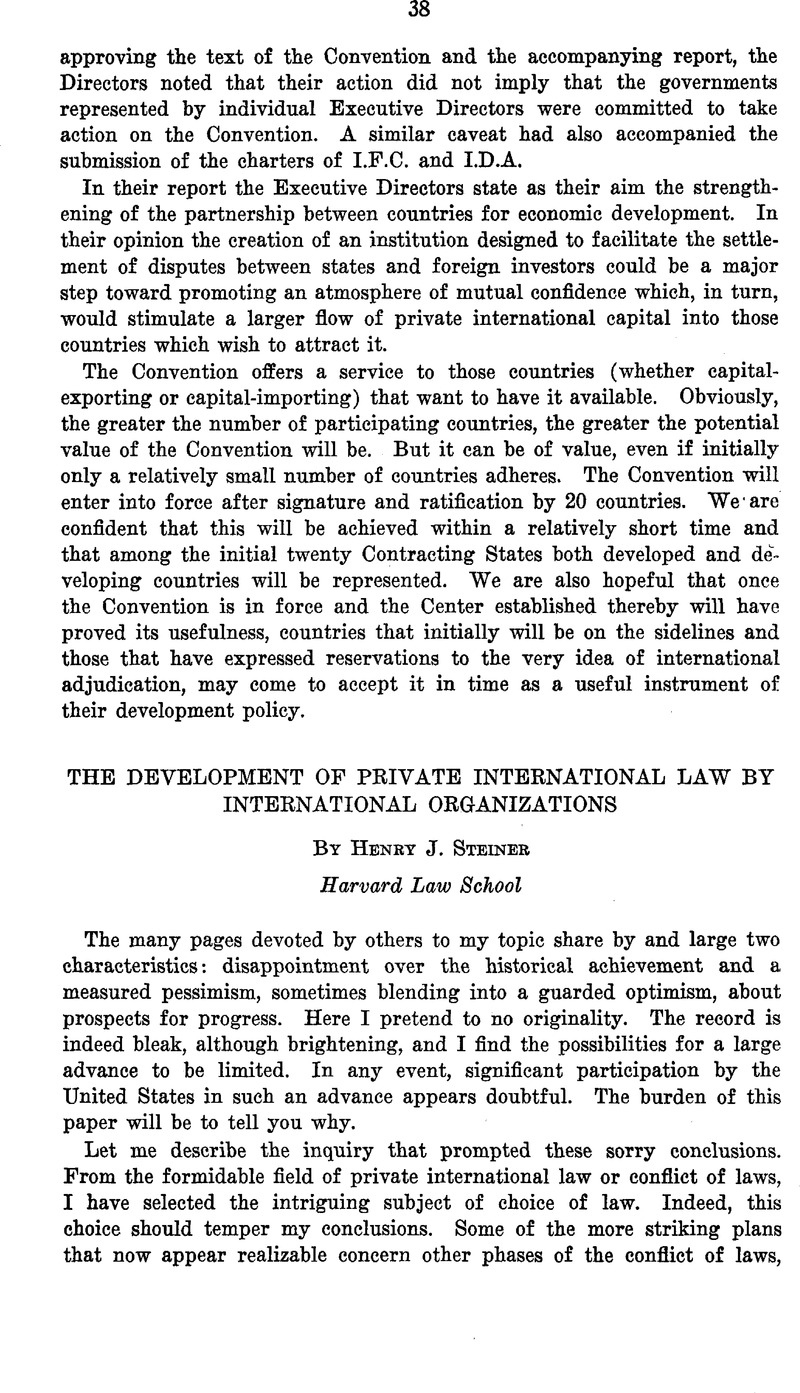No CrossRef data available.
Published online by Cambridge University Press: 27 February 2017

1 For two recent statements, see 1 Babel, The Conflict of Laws: A Comparative Study 26-37 (2d ed., 1958), and Batiffol, Traite” ElSmentaire de Droit International Privé 20-56 (3d ed., 1959).
2 Story, Commentaries on the Conflict of Laws, Foreign and Domestic ∮∮ 25-38 (1834). See generally Stevenson, “The Eelationship of Private International Law to Public International Law,” 52 Columbia Law Eev. 561 (1952).
3 Perhaps the classic pioneer article is Cavers, “A Critique of the Choice-of-Law Problem,” 47 Harvard Law Eev. 173 (1933). The writing in this field is now rich and contentious. Five major contemporary efforts to give direction to choice-of-law thinking are: Cavers, The Choice-of-Law Process (1965); Currie, Selected Essays on the Conflict of Laws (1963); Ehrenzweig, A Treatise on the Conflict of Laws (1962); von Mehren and Trautman, The Law of Multistate Problems (1965); and the Tentative Drafts of Eestatement of the Law Second, Conflict of Laws (Willis L.M. Eeese, Beporter).
4 For illustrative cases, see Babcock v. Jackson, 12 N.Y. 2d 473, 191 N.E. 2d 279 (1963), and Griffith v. United Air Lines, Inc., 416 Pa. 1, 203 At.2d 796 (1964).
5 Steele v. Bulova Watch Co., 344 U.S. 280 (1952); Lauritzen v. Larsen, 345 U.S. 571 (1953); and MeCulloeh v. Sooiedad Nacional de Marineros de Honduras, 372 U.S. 10 (1963).
6 Banco Nacional de Cuba v. Sabbatino, 376 U.S. 398 (1964).
7 See generally Nadelmann, “Uniform Legislation vs. International Conventions,” in Domke (ed.), International Trade Arbitration 167 (1958).
8 An English text of the Code appears in 4 Hudson, International Legislation 2283 (1931).
9 Ees. II, Feb. 4, 1965, Fifth Meeting of the Inter-American Council of Jurists, Organization of American States, Doc. 106 (English) Eev.
10 For a description of the Conventions, see Philip, “The Scandinavian Conventions on Private International Law,” 96 Hague Academy of International Law, Eecueil des Cours 245 (1959).
11 Art. VIII(2)(b) has given rise to many vexing questions about its coverage, in the courts of this and foreign countries. See, e.g., Banco do Brasil, S.A. v. Israel Commodity Co., Inc., 12 N.T. 2d 371, 190 N.E. 2d 235 (1963).
12 An English translation of this Convention on the Law Applicable to International Sales of Goods appears in 1 A. J. Comp. Law 275 (1952).
13 Various sections of Bestatement Second of the Conflict of Laws wrestle with these problems. See ∮ 332b, 346 and 346g of Tentative Draft No. 6 (April 22, 1960), and §254a of Tentative Draft No. 5 (April 24, 1959).
14 The text of this Convention Eelating to a Uniform Law on the International Sale of Goods and of the appended Uniform Law appears in 13 A. J. Comp. Law 453 (1964), and in 3 Int. Legal Materials 855 (1964).
15 For a trenchant criticism of the conflicts aspects of the Uniform Law, see Nadelmann, “The Uniform Law on the International Sale of Goods: A Conflict of Laws Imbroglio,” 74 Yale Law J. 449 (1965).